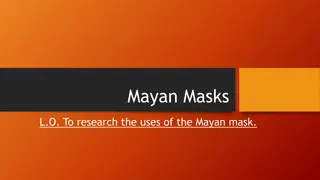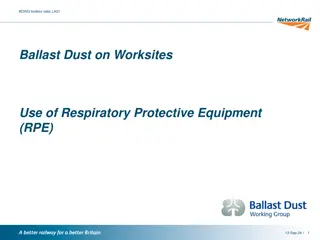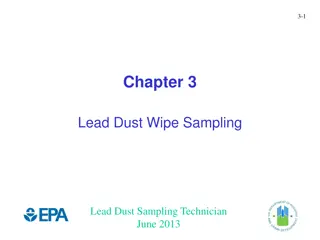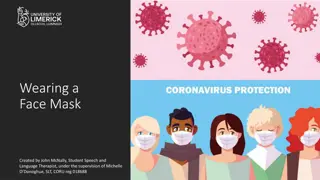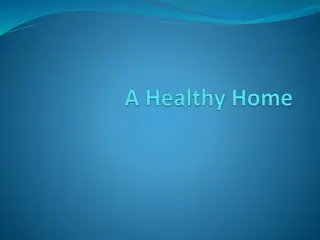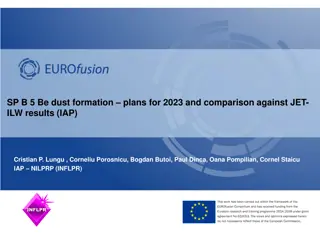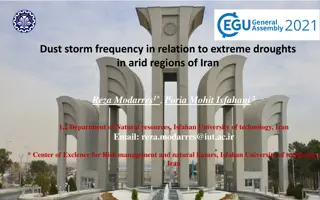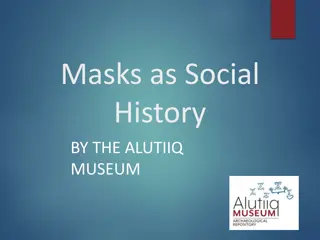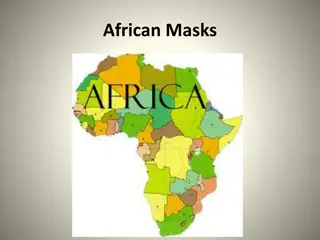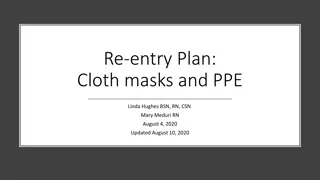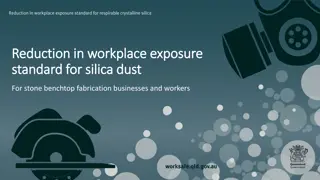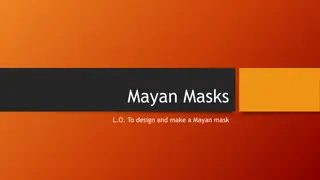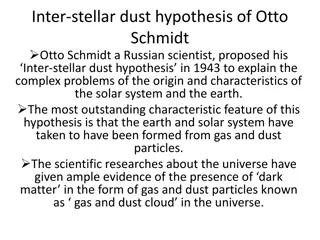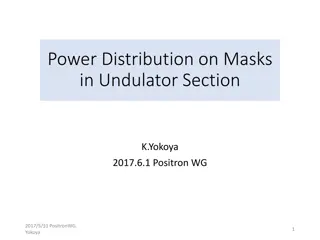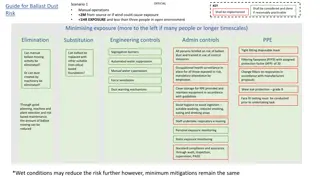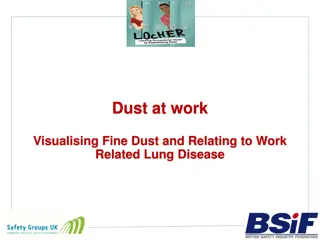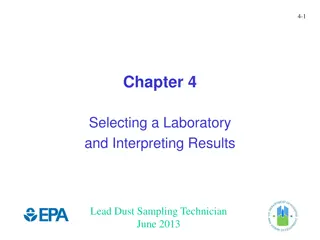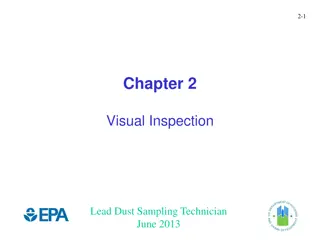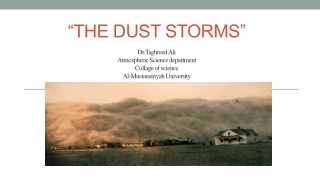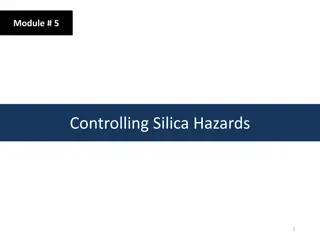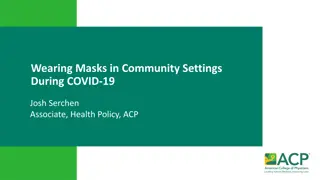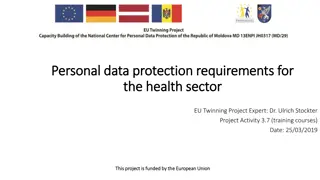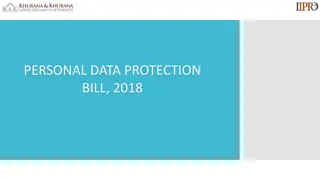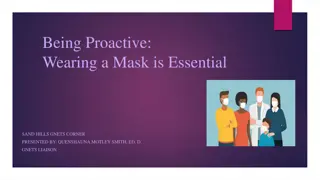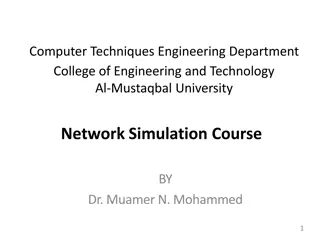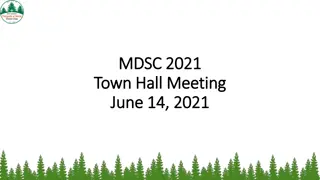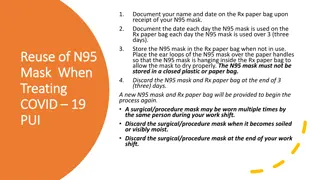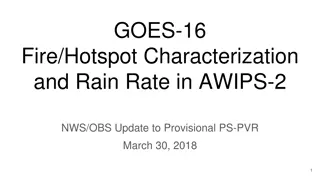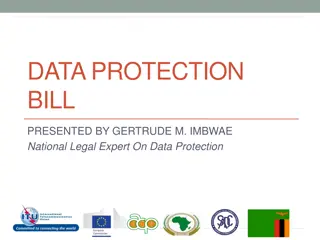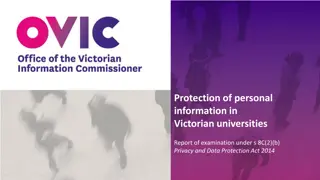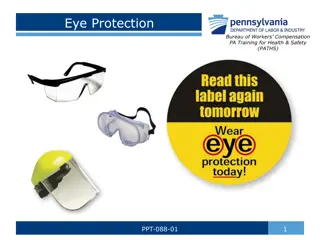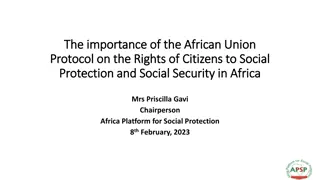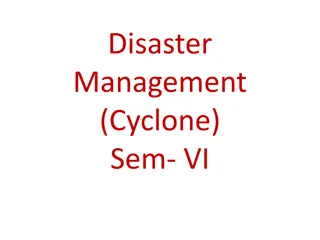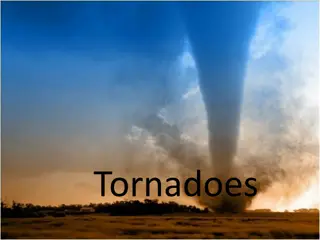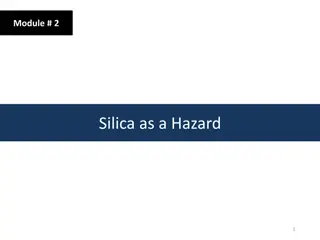Understanding the Importance of Dust Masks for Personal Protection
Training is essential for proper use of dust masks to avoid a false sense of protection. When worn correctly, dust masks prevent inhalation of harmful particles, although they have limitations. NIOSH-approved masks offer better protection and come in various styles to suit workplace needs.
Uploaded on Sep 29, 2024 | 0 Views
Download Presentation

Please find below an Image/Link to download the presentation.
The content on the website is provided AS IS for your information and personal use only. It may not be sold, licensed, or shared on other websites without obtaining consent from the author. Download presentation by click this link. If you encounter any issues during the download, it is possible that the publisher has removed the file from their server.
E N D
Presentation Transcript
Filtering Face Pieces Dust Masks
Why is training required? Why is training required? Click to edit Master text styles Second level Third level Fourth level Fifth level To protect your health. Training is required by PEOSH for anyone who wears a respirator. If you don t know how to use a respirator properly, you can get a false sense of protection.
How do Dust Masks protect you? How do Dust Masks protect you? Click to edit Master text styles Second level Third level Fourth level Fifth level When used properly, dust masks prevent the inhalation of dust in the air and protects the lungs. http://us.yimg.com/i/edu/ref/ga/s/970.jpg MSA N95 Affinity Plus Respirator (10 pack) When you inhale, air is pulled through the dust mask and dust is captured on the outside of the mask.
How they work. How they work. Click to edit Master text styles Second level Third level Fourth level Fifth level Air Air inhaled inhaled Air exhaled
Limits of Dust Masks. Limits of Dust Masks. Click to edit Master text styles Second level Third level Fourth level Fifth level chemical vapors. Dust masks will leak if they don t fit your face properly. Dust masks don t filter out Dust masks are not adequate for heavy amounts of dust. Dust masks may not be suitable for highly toxic dusts.
How much protection How much protection does a Dust Mask provide? does a Dust Mask provide? Click to edit Master text styles Second level Third level Fourth level Fifth level exposure limit (PEL). Dust masks only provide protection to levels 10 times above the dust permissible Example Wood dust permissible limit 5 mg/cu. meter mg/cu. meter = milligrams per cubic meter Dust mask protects up to 50 mg/cu. meter
Variety Variety Click to edit Master text styles Second level Third level Fourth level Fifth level adequate protection for workplace dust. Dust masks come in variety of styles and brands. Not NIOSH-approved Not all dust masks provide Only NIOSH-approved dust masks can be used for protection against dust levels that exceed the PEL. NIOSH-approved
Some give better protection. Some give better protection. Click to edit Master text styles Second level Third level Fourth level Fifth level particles N95/R95/P95 masks filter out 95% of dust particles N99/R95/P99 masks filter out 99% of dust N100/R100/P100 masks filter out 99.7% of dust particles N99 or N100 masks are recommended for very fine dust or dangerous dusts such as silica.
Where Dust Masks Where Dust Masks CAN NOT CAN NOT be used. be used. Click to edit Master text styles Second level Third level Fourth level Fifth level Dust levels more than 10 times the permissible exposure limit (PEL) Dust masks will not provide adequate protection in the following situations: Exposure to chemical gases or vapors Oxygen deficiency
Medical Evaluations Click to edit Master text styles Second level Third level Fourth level Fifth level Breathing through a respirator is work for the body. Medical evaluations are required for anyone required to wear respirators. Respirators can be hazardous to people with heart or lung problems.
Medical questionaire Click to edit Master text styles Second level Third level Fourth level Fifth level A healthcare provider decides if you need a medical exam. The first step of a medical evaluation is a confidential medical questionnaire. Results are only used to determine if you are fit to wear a respirator.
Dust masks must fit properly. Click to edit Master text styles Second level Third level Fourth level Fifth level Fit-testing must be done before first wearing a dust mask. Dust masks must fit properly to prevent leaks around the edges. Beards are not allowed when wearing a dust mask.
FIT TESTING Click to edit Master text styles Second level Third level Fourth level Fifth level In fit-testing, you first try on a dust mask for general comfort and fit. After a comfortable respirator is selected, we conduct the actual fit-test.
Replace masks at least DAILY. Click to edit Master text styles Second level Third level Fourth level Fifth level breathing becomes difficult, if they are damaged, or if they are dirty or dusty on the inside. Dust masks cannot be cleaned or repaired if soiled or damaged. Replace dust masks if Dispose of dust masks at the end of the day or shift. Torn mask
When to replace the mask. When to replace the mask. Click to edit Master text styles Second level Third level Fourth level Fifth level your supervisor. If you notice an odor, find dust inside the mask, feel ill, or you think your respirator leaks, notify Leave the area if you know your mask is leaking.
Click to edit Master text styles Second level Third level Fourth level Fifth level
QUESTIONS Click to edit Master text styles Second level Third level Fourth level Fifth level


